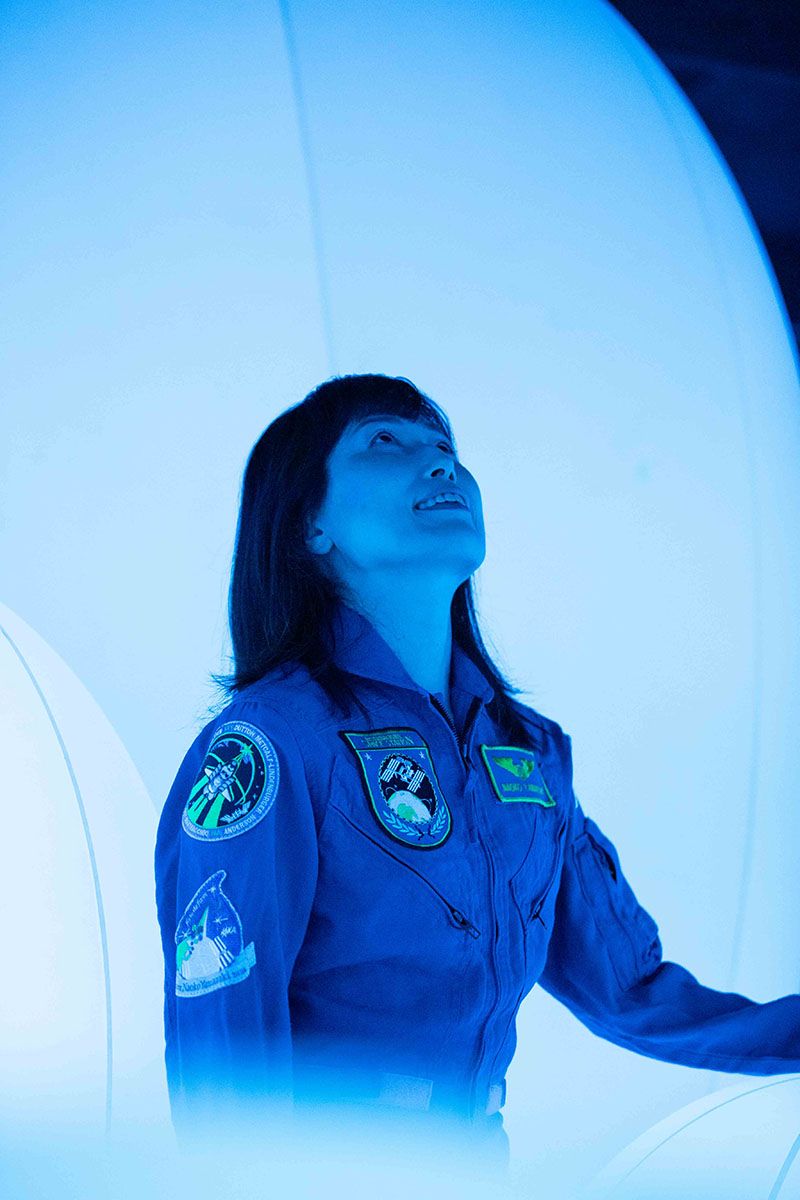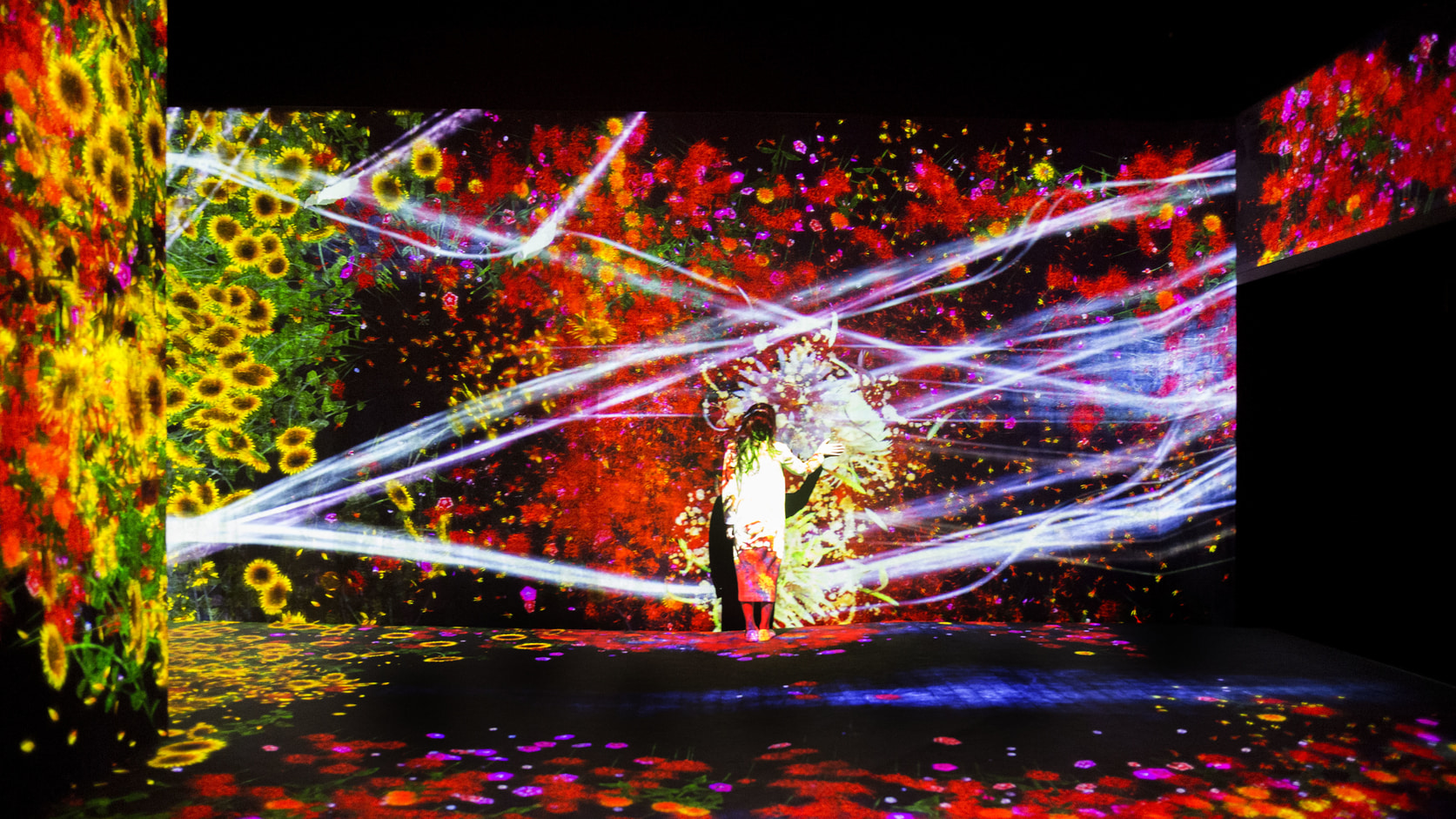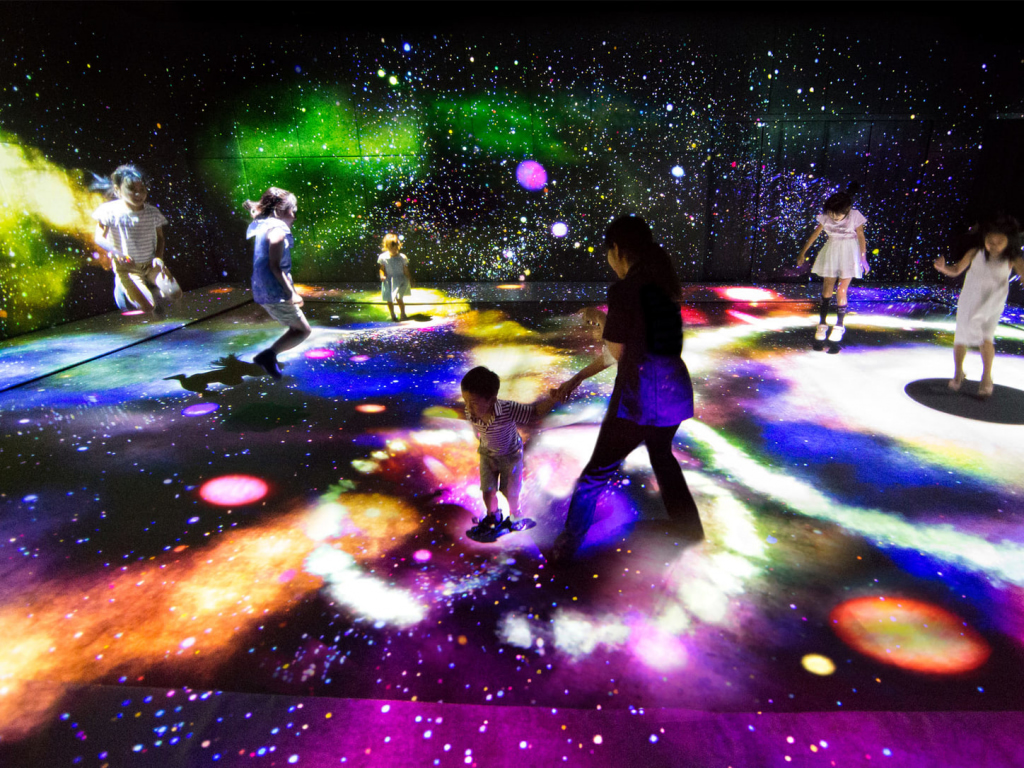Naoko Yamazaki is gazing up at the giant floating balloons, her face as illuminated as the egg-shaped balls, which shift between soft hues of pink, blue, red and white as she touches and moves them about. The music playing is airy and minimal, like instrumental Sigur Ros. The room we’re in is called Weightless Forest of Resonating Life.
The feeling is unanimous. There couldn’t be a better place in Tokyo to photograph an astronaut than the otherworldly Mori Building Digital Art Museum: teamLab Borderless.

Former JAXA astronaut Naoko Yamazaki photographed by Allan Abani for Tokyo Weekender July-August 2020 magazine
Launched in June 2018, the museum has just celebrated its second anniversary and attracted millions of visitors from more than 160 countries with its Instagenic, immersive projection artworks. With a mindfulness towards social issues raised, the museum focuses on educational projects based on the concept of “collaborative creativity and co-creation.”
If you’ve spent some time wandering the spacious halls spanning 10,000m², you may already have an idea of the overall concept: a world of art without boundaries. TeamLab, the international art collective behind the mind-bending displays, always aimed to infuse the creativity with education, albeit not in a strict instructional way. You may notice, for example, that there are no maps or signs guiding you through the building, and no intrusive artwork captions.
“We want to promote proactive learning”
“The idea is to promote proactive, high-dimensional learning rather than passive, two-dimensional education,” says Mori Building PR representative Kazuna Takahashi. “We see Tokyo the city as clean and flat, we see students at school spending a lot of time just sitting in classrooms and memorizing for tests, and we see more jobs being replaced by machines. So the artworks here are questioning the country’s education system and we feel it is important to cultivate creativity within nature.”

There are several ways in which the museum seeks to inspire and educate: co-creative experiences allow for visitors to interact with and influence each other; constantly changing information fuels communication and leadership skills; and exploring 3D spaces with your body inspires higher-dimensional thinking.
In practical terms, these concepts are brought to life in the Athletics Forest and Future Park areas of the museum. While adults will fully enjoy the activities on offer, it’s especially fun for kids to get involved. Here, you’ll absorb understanding about the ecosystem as you slide down a raised part of the floor and watch projections of honeybees pollinating flowers, which then turn to flowers and fruit. You’ll explore depth perception as you climb up and through a forest of lit-up poles. You can even ponder the life cycle of stars as you jump on a trampoline that “creates” new planets with each bounce.
Does it come close to the real experience of leaving the Earth’s atmosphere? Probably not. But by the look on Naoko Yamazaki’s face as we photograph her for our July-August 2020 magazine cover, it is enough to awe the second Japanese woman ever to fly in space. And you can’t argue with that level of impact.
Good to Know
The museum was closed for 100 days during the coronavirus outbreak but opened again on June 8 while limiting the number of guests to half the normal allowance. The artworks change seasonally and for summer 2020 you can look forward to themes of hydrangeas, rice fields and fireflies.
For more information and to book a ticket, go to borderless.teamlab.art









